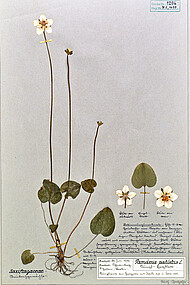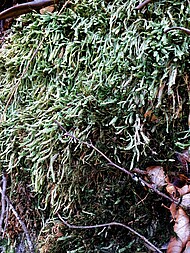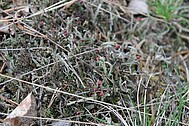The Botany Section
What is botany?
The term "botany" refers to the scientific study of plants. The word is derived from altgr. botáne, 'plant, vegetation'.
In 1753 the Swedish botanist Carl Linnaeus published his work "Species Plantarum" and established the binomial system (genus and species) for naming plants. Since then, every new plant species has had to be described and published in a recognized scientific journal or book. Today, at the International Botanical Congress, rules for plant nomenclature will be established.
Specimens of plants and fungi collected in the field are brought to the Museum of Natural History in an almost constant stream. They are the raw material, the building blocks of botanical knowledge. Pressed between sheets of paper and accompanied by field notes, they are waiting to be identified, catalogued, classified and analyzed.
Experts in systematics document and group organisms in a way that reflects their evolutionary relationships, using a variety of techniques to learn the basic characteristics of a studied plant, from simple measurements of plant parts and shapes to more sophisticated microscopic, biochemical and molecular approaches. Then they can assign the plant to a specific taxonomic group based on its similarity to others.
Ethnobotanists and ethnomycologists investigate how people all over the world use plants and fungi, e.g. as food, medicine, for utensils, construction, clothing, etc. This was also one of the reasons why Margravine Karoline Luise founded the botanical collection and the botanical garden in Karlsruhe Intense efforts are being made to discover and exploit the potential in plants before their genetic resources are lost to extinction.
Botanical research is devoted to the form and function of the plant body, the classification of plant species, the phytochemical and genetic basis, the ecological classification of plant species and communities, and their use and conservation.
In addition to vascular plants, mosses and algae, other groups of species have traditionally been (and are) associated with botany. Today, however, these groups, the fungi and lichens (= lichenized fungi), are regarded as a separate kingdom; in fact, they are more closely related to animals than to plants. For traditional reasons, however, mycology, the scientific study of fungi, remains as part of botany.
The tasks of the Department of Botany at the SMNK are:
• Collecting, identifying and describing plants and fungi and preserving them in collections for the future
• Research on the distribution of plants and fungi and the environmental conditions in which they live today
• Research on the use of plants and fungi (Ethnobotany and Ethnomycology)
• Research on ecological and nature conservation issues
• Research on the taxonomy of northern hemisphere plant parasitic small fungi
• Scientific and technical supervision of the collections
• Preparation and provision of data from the collections in the form of databases for science, other departments and the interested public
• Advice to the public and other services on issues related to flora, vegetation, plants and fungi
The geographical focus of the work in botany is on the one hand in southwest Germany, on the other hand in the area of low mountain ranges and mountains worldwide, especially the Caucasus, the Himalayas and the Andes.
What is a herbarium?
Dried and pressed plants and mushrooms are archived in a herbarium. Each specimen is mounted on a herbarium sheet and provided with a label on which, in addition to the species name, the date of discovery, the place of discovery and the collector are noted, and in some cases also the use. All major herbaria worldwide are registered in the "Index Herbariorum". The international abbreviation of the Herbarium Karlsruhe is KR. Herbarium plants have a very long shelf life if they are stored dry and free from insects. The oldest documents in Karlsruhe come from the founding time of the collection under Margravine Karoline Luise and are more than 250 years old.
Ethnobotany and Ethnomycology
Plants provide humanity with our most basic resources—food, medicines, fiber, building materials, and a range of other economically valuable products and essential services. However, habitat destruction, overharvesting of plants, the spread of invasive species, climate change and other human activities are having tremendous adverse impacts on plants and their ecosystems. As many plant species new to science are discovered each year, many are undoubtedly still awaiting discovery, and many are lost forever before we have a chance to find and study them and realize their potential. Many others that have been identified but have not yet been studied for their useful properties using modern methods are threatened with extinction. Perhaps never before in human history has there been a more urgent need to discover, understand, conserve and sustainably use the plant resources vital to human existence.
Ethnobotany and ethnomycology deal with the use of plants and fungi by humans. Ethnobotany and ethnomycology simply mean the study of plants and fungi used by people in different parts of the world, whether e.g. in the Amazon basin, the Himalayas, the Caucasus or the Black Forest.
In order to fulfill these diverse tasks, the Botany Department has three scientific positions and two technical positions. Many tasks are performed by volunteers and, if possible, additional staff are recruited through third-party funded projects.
Interested in a research cooperation? Are you looking for topics for research or theses? Feel free to contact us!
If you have questions about vascular plants, mosses and lichens, and about the use of plants (ethnobotany), you can contact Prof. Dr. Contact Rainer Bussmann. Email: rainer.bussmann@smnk.de
If you have any questions about fungi and algae, you can contact Dr. Contact Markus Scholler. Email: markus.scholler@smnk.de









